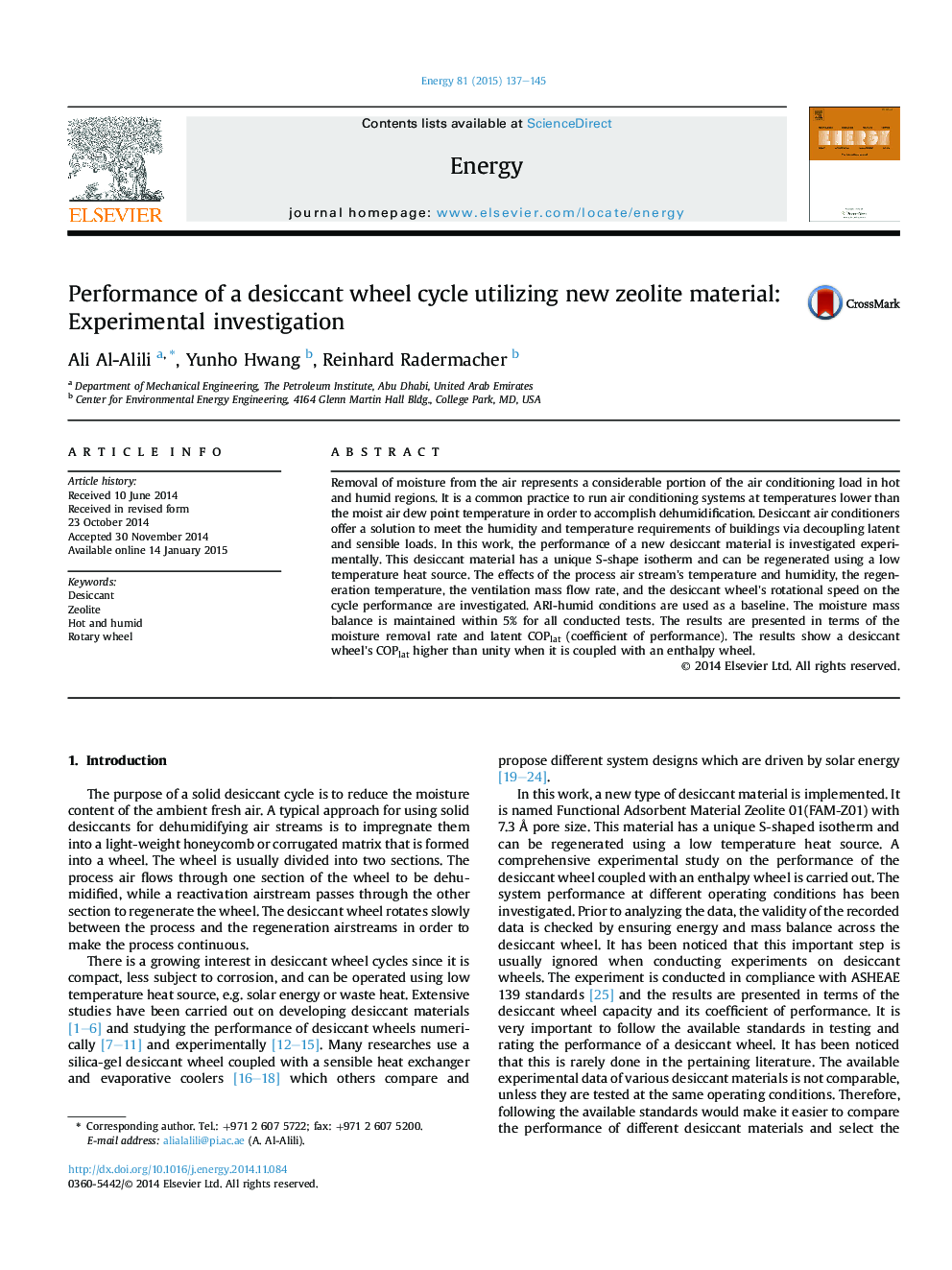| Article ID | Journal | Published Year | Pages | File Type |
|---|---|---|---|---|
| 8075651 | Energy | 2015 | 9 Pages |
Abstract
Removal of moisture from the air represents a considerable portion of the air conditioning load in hot and humid regions. It is a common practice to run air conditioning systems at temperatures lower than the moist air dew point temperature in order to accomplish dehumidification. Desiccant air conditioners offer a solution to meet the humidity and temperature requirements of buildings via decoupling latent and sensible loads. In this work, the performance of a new desiccant material is investigated experimentally. This desiccant material has a unique S-shape isotherm and can be regenerated using a low temperature heat source. The effects of the process air stream's temperature and humidity, the regeneration temperature, the ventilation mass flow rate, and the desiccant wheel's rotational speed on the cycle performance are investigated. ARI-humid conditions are used as a baseline. The moisture mass balance is maintained within 5% for all conducted tests. The results are presented in terms of the moisture removal rate and latent COPlat (coefficient of performance). The results show a desiccant wheel's COPlat higher than unity when it is coupled with an enthalpy wheel.
Keywords
Related Topics
Physical Sciences and Engineering
Energy
Energy (General)
Authors
Ali Al-Alili, Yunho Hwang, Reinhard Radermacher,
